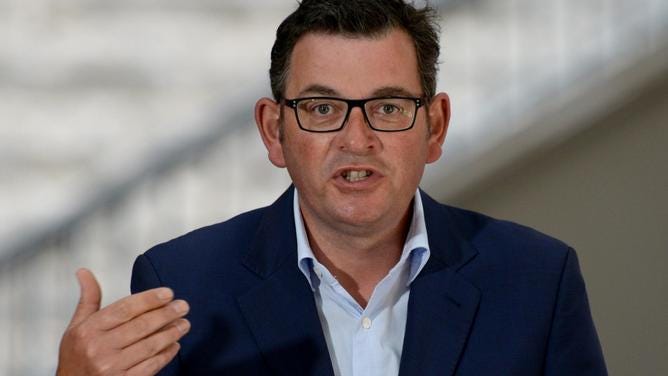Victorian Premier Daniel Andrews’ move to phase out gas consumption by 2030, is not only ambitious, but it’s also caused significant alarm among economists and energy experts.
The proposal aims to substantially reduce carbon emissions however, the move poses major economic and energy security risks, including the possibility of rolling blackouts and the need for a more robust energy mix that includes nuclear power.
Eliminating gas in a decade will not only affect household heating and cooking but will also have far-reaching consequences for Victoria's industrial sector, which relies heavily on natural gas for processes like manufacturing and chemical production.
California's experience serves as a caution. In 2020, the state experienced rolling blackouts due to an overdependence on renewable energy and a lack of adequate backup.
Australia's energy demands are unique, and what happened in California could be indicative of Victoria's future if it moves ahead with this ambitious gas-elimination plan without adequate preparation.
And according to the Australian Energy Regulator, Victoria accounts for approximately 19% of the country's natural gas consumption, making it one of the largest consumers in Australia.
"Gas is deeply embedded in Victoria's economy and eliminating it without a well-thought-out transition strategy will put jobs at risk and could result in higher energy prices," warns Dr. Emily Harris, an energy economist at the University of Melbourne.
"To switch abruptly to alternative energy sources could require significant capital investment from industries, potentially leading to job losses and making Victoria less competitive on the global stage."
One of the most pressing concerns is the potential for rolling blackouts as more and more stress is placed on the grid.
The government is advocating the use of electric heat pumps and induction cooktops to replace gas appliances, thereby increasing electricity demand.
Yet, Victoria's electric grid is already strained, experiencing capacity issues during peak times like summer when air conditioners run full tilt.
"There’s a clear risk of rolling blackouts if the state doesn't significantly upgrade its electricity infrastructure and diversify its energy sources," says Tim Jackson, an energy analyst at the Australian Energy Market Operator.
"Moving from one form of energy to another will create additional demand that the existing grid simply can't manage, especially if we continue to rely heavily on intermittent renewable energy sources like wind and solar."
If Victoria is to transition away from fossil fuels effectively and reliably, then experts suggest nuclear energy must be part of the equation.
Currently, Australia has no commercial nuclear power plants, largely due to political opposition and a lack of public support.
However, nuclear energy offers a highly efficient, low-carbon energy source that can provide the base-load electricity essential for a stable grid.
"Nuclear energy is one of the most effective ways to produce a large amount of energy with minimal carbon emissions," argues Dr. Michael Thompson, a nuclear physicist at Monash University.
"It's a viable and sustainable option that can complement renewables and provide energy security for Victoria."
Next-generation nuclear technologies like small modular reactors (SMRs) are becoming increasingly safe and economically viable.
These reactors are designed to be safer than traditional designs and can be scaled to fit specific energy demands, making them an ideal solution for Australia's evolving energy landscape.
If Victoria is genuinely committed to reducing carbon emissions while ensuring a stable, reliable energy supply, nuclear energy must be part of the conversation.
Unlike renewable sources, nuclear power can provide a constant, reliable flow of electricity. Additionally, it produces zero carbon emissions during operation, aligning with the state's environmental goals.
Countries like France have successfully utilized nuclear power to meet a significant portion of their electricity demands while keeping carbon emissions low. Of course, there are valid concerns about
With the clock ticking towards 2030, Victoria's move to eliminate gas remains a topic of hot debate, involving not just environmental considerations but also questions of economic stability and energy security.
If the state is serious about transitioning away from fossil fuels without causing economic upheaval or jeopardizing its energy grid, then it needs a comprehensive and nuanced plan that includes all available options.
"This is not just about carbon reduction. It's about maintaining a reliable, affordable energy system that can support the economic growth and well-being of all Victorians," says Dr. Harris. "Ignoring the potential role of nuclear energy in that mix would be shortsighted."
As Victoria takes steps toward a fossil-free future, its leaders must balance idealism with pragmatism, ensuring that the pursuit of environmental goals does not come at the expense of economic stability and energy security. The stakes are high, and the time to act thoughtfully is now.
The Premier's initiative to eliminate gas by 2030 is undoubtedly well-intentioned. The fight against climate change requires bold action and leadership. However, Victoria must weigh the economic and practical consequences of such a move carefully.
To transition responsibly, Victoria should consider a diversified energy portfolio that includes nuclear power as a stable, zero-emission source.
This approach mitigates the risks of rolling blackouts and economic disruption, while still positioning the state as an environmental leader.





The 5 Countries That Produce the Most Carbon Dioxide (CO2) US, India, China, Russia and Japan however the single state of Australia , Victoria with ferocious leadership will reduce CO2 footprint by leaving citizens of Victoria, Australia without gas.